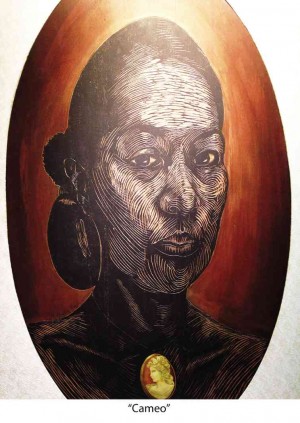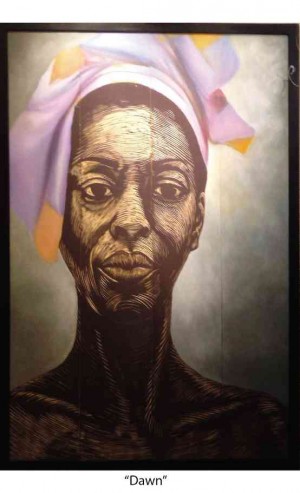
“Why are there no great women artists?” The controversial question raised by American art historian Linda Nochlin was also the title of her landmark essay written in the 1960s.
Citing facts of history, Nochlin unreels the suppression of women by subjecting them to roles limited by domesticity and fertility. Not only in the West, but even worse in the Oriental world where women were held in the lowliest regard. Even Confucius stated, “Only the untalented woman is virtuous.”
How then do we now respond to Nochlin’s question almost half a century after? Closer to home, we have seen the visible and active presence of women in the arts as well as in art management. Indeed, the use of the descriptive “women,” as in women writers, is still resented, as if to suggest an inferior species. They are artists, period, and therefore the gender is irrelevant.
Close on the heels of “Appasionata,” a five-women show at Altro Mondo Gallery, is the current exhibition of Ambie Abaño with the provocative title, “Lifting Veils.” The title is sheer exhilaration, a rightful claiming of one’s entitlement. The veil, as we know, is a piece of garment meant to keep a woman’s face, or identity and presence, hidden from view, symbolically shutting her out of society, effectively locked in obscurity.

As Salman Rushdie said, “I think the veil is a way of taking power from women.”
Mastery of woodcut
Abaño unfurls her impressive mastery of the woodcut medium. An accomplished painter herself, she has, however, devoted her time, energy, if not obsession, to the graphic arts. The works are in large-scale, as if to convey in no uncertain terms that the artist will not be cowed by such a challenge. Abaño commands the gallery space with her artistic presence through her self-portraits, limned in clear, crisp and assured lines. The woodcut medium provides the stark, striking contrast between black and white. Interestingly, Abaño’s self-portrait is printed on lace, which intimates the artist’s femininity.
Woodcut involves the relief process where “the parts of the printing surface not meant to carry ink are cut away, leaving the design to be printed in relief at the level of the original surface. The surface is then inked and the ink is transferred to paper with pressure.” (Artform, Sarah Pheble).
A work spanning across the wall, “Conversations Between and Among…” is an assembly of male visages printed on spandex, a stretchable fabric, and wrapped tightly on mounds of foam, raising the work into lumpy and bulbous relief, plumping up the volume and contours of the faces for greater verisimilitude. Alas, the sinister, leering expressions on the male visages run the gamut suggestive of lust, violence, hatred, malevolence and hostility, marvelously achieved through the simple expedient of stretching the fabric.
It is at once a work of ingenuity and innovation. The same technique applies to the “Chair” works, where a man’s woodcut visage is imprinted on the cushy backrest.
A series of works titled “Gaze” adverts to the traditional “male gaze” where, traditionally, women are made the objects of visual inquisition and voyeurism. With the advent of the Feminist Revolution that has galvanized women worldwide into action, art has become a primary instrument for the advocacy of their rights.
“Dialogue with Kathe” is an allusive work, a tender homage to the German Expressionist Kathe Kollwitz, renowned for her stark black-and-white portrayals of the suffering and misery of the working class. Abaño emulates Kollwitz, who did over a hundred drawings, lithographs and sculptures of herself.
One can thus regard “Lifted Veils” as Abaño’s personal corrective to Linda Nochlin’s piercing question and lament.
Abaño is a recipient of residences sponsored by Alliance Française and the Asian Cultural Council. From 2006 to 2012, she was president of the Philippine Association of Printmakers.
Triumphantly, Abaño has lifted the veil, revealing her true and distinct identity as a woman and artist.

